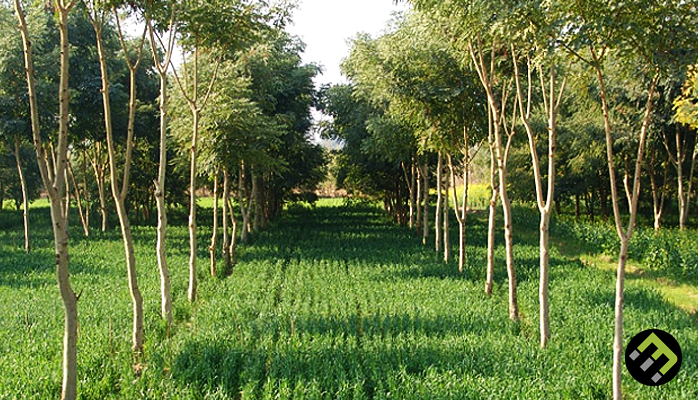Forest Carbon Projects in India
Introduction
Forests play a vital role in mitigating climate change by acting as carbon sinks, absorbing carbon dioxide (CO2) from the atmosphere and storing it in biomass and soil. In India, where deforestation and forest degradation have been significant concerns, forest carbon projects have emerged as an important strategy for both conserving forests and contributing to the global fight against climate change. These projects not only help in reducing carbon emissions but also provide social, economic, and environmental benefits to local communities. This essay explores the concept of forest carbon projects in India, their importance, current initiatives, challenges, and future prospects.
Understanding Forest Carbon Projects
Forest carbon projects are initiatives that aim to enhance the carbon sequestration capacity of forests through activities such as afforestation, reforestation, and forest conservation. These projects generate carbon credits, which represent a quantified reduction or removal of CO2 from the atmosphere. The credits can then be sold in carbon markets, providing financial incentives for forest conservation and sustainable management.
In India, forest carbon projects are primarily developed under frameworks such as the United Nations’ Reducing Emissions from Deforestation and Forest Degradation (REDD+) program, the Clean Development Mechanism (CDM), and voluntary carbon standards like the Verified Carbon Standard (VCS) and the Gold Standard. These projects are often implemented by governments, non-governmental organizations (NGOs), and private entities, with the involvement of local communities.
Importance of Forest Carbon Projects in India
India is home to diverse forest ecosystems, ranging from tropical rainforests to dry deciduous forests, which are crucial for maintaining ecological balance, supporting biodiversity, and providing livelihoods for millions of people. Forest carbon projects in India offer multiple benefits:
- Climate Change Mitigation: By sequestering carbon, these projects contribute to reducing the overall concentration of greenhouse gases in the atmosphere, helping to mitigate climate change.
- Biodiversity Conservation: Forest carbon projects often involve the restoration of degraded lands and the protection of existing forests, which in turn supports the conservation of biodiversity, including endangered species.
- Livelihood Support: Many forest carbon projects engage local communities in sustainable forest management, providing them with alternative sources of income through activities like agroforestry, non-timber forest products, and eco-tourism.
- Soil and Water Conservation: Forests play a crucial role in maintaining soil fertility and regulating water cycles. By preventing deforestation and promoting reforestation, these projects help in conserving soil and water resources.
- Alignment with National Goals: Forest carbon projects align with India’s commitments under the Paris Agreement and its Nationally Determined Contributions (NDCs), which include increasing forest cover and enhancing carbon sequestration.
Current Initiatives and Success Stories
India has seen the implementation of several successful forest carbon projects, particularly under the REDD+ program and voluntary carbon standards. Some notable initiatives include:
- REDD+ Projects: India has been actively involved in the REDD+ program, which aims to incentivize forest conservation and sustainable management. States like Himachal Pradesh, Madhya Pradesh, and Uttarakhand have launched REDD+ initiatives that focus on enhancing forest cover, improving forest governance, and involving local communities in conservation efforts.
- Araku Valley Livelihood Programme: This project in Andhra Pradesh, led by the Naandi Foundation, focuses on reforestation and sustainable agriculture in the Araku Valley. It has successfully restored degraded lands, improved biodiversity, and generated carbon credits, while also enhancing the livelihoods of tribal communities through organic farming.
- Kaziranga Karbi Anglong Landscape (KKL) Project: This project in Assam, implemented by the Wildlife Trust of India (WTI) and other partners, aims to restore degraded forests and create wildlife corridors in the Kaziranga-Karbi Anglong landscape. The project has been successful in sequestering carbon, conserving biodiversity, and providing sustainable livelihood options to local communities.
- Madhya Pradesh Green India Mission: Under the Green India Mission, Madhya Pradesh has undertaken large-scale afforestation and reforestation activities to increase forest cover and enhance carbon sequestration. The project also focuses on improving the livelihoods of forest-dependent communities through sustainable forest management practices.
Challenges Facing Forest Carbon Projects in India
Despite their potential, forest carbon projects in India face several challenges:
- Land Tenure and Ownership Issues: Unclear land tenure and ownership rights can complicate the implementation of forest carbon projects. In many cases, the lack of legal recognition of community land rights leads to conflicts and hampers project success.
- Funding and Financial Viability: Securing adequate funding for forest carbon projects can be challenging, particularly in the early stages of project development. The financial viability of these projects often depends on the fluctuating prices of carbon credits in the voluntary market.
- Capacity and Knowledge Gaps: Implementing successful forest carbon projects requires technical expertise in areas such as carbon measurement, monitoring, and reporting. There is often a lack of capacity and knowledge among local stakeholders, which can impede project progress.
- Monitoring and Verification: Ensuring the credibility and accuracy of carbon credits requires robust monitoring and verification processes. In remote and forested areas, these processes can be logistically challenging and costly.
- Community Participation and Benefit Sharing: While involving local communities is essential for the success of forest carbon projects, ensuring fair and equitable benefit-sharing can be difficult. Conflicts may arise over the distribution of benefits, particularly in cases where community expectations are not met.
Future Prospects
The future of forest carbon projects in India looks promising, particularly in the context of global climate change mitigation efforts and India’s commitment to increasing its forest cover. Several factors could drive the growth of these projects:
- Government Support: Continued support from the Indian government, including policies that promote afforestation, reforestation, and sustainable forest management, will be crucial. Initiatives such as the National Action Plan on Climate Change (NAPCC) and the Green India Mission provide a strong policy framework for expanding forest carbon projects.
- International Collaboration: Collaboration with international organizations and carbon markets can help secure funding and technical expertise for forest carbon projects. Participation in programs like REDD+ and the Clean Development Mechanism (CDM) will continue to be important.
- Technological Advancements: Advances in remote sensing, satellite imagery, and blockchain technology can improve the monitoring, reporting, and verification of forest carbon projects. These technologies can enhance transparency, reduce costs, and increase the credibility of carbon credits.
- Private Sector Involvement: Increasing interest from the private sector in carbon offsetting and corporate social responsibility (CSR) can drive investment in forest carbon projects. Companies looking to achieve carbon neutrality or enhance their sustainability profiles may see forest carbon projects as an attractive option.
- Community Empowerment: Strengthening the capacity of local communities to participate in and benefit from forest carbon projects will be essential. This includes recognizing community land rights, providing technical training, and ensuring fair benefit-sharing mechanisms.
Conclusion
Forest carbon projects in India represent a critical strategy for addressing climate change, conserving biodiversity, and supporting local livelihoods. While challenges remain, the potential benefits of these projects are significant, and with the right support and investment, they can play a vital role in achieving India’s climate and sustainability goals. By leveraging government policies, international collaboration, technological advancements, and community engagement, India can further expand its forest carbon projects and contribute meaningfully to global efforts to combat climate change.




Leave a Reply